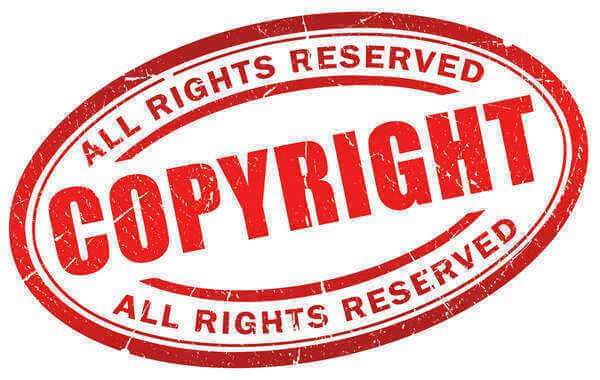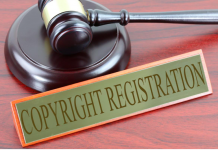This article is written by Akshita Gupta, from Symbiosis Law School, Noida. This article discusses the analysis of the original artwork of property and how it could be protected under Copyright Law.
Table of Contents
Introduction
Copyright is the right given to the owners exclusively to protect their original work from theft, misuse and its duplication. One such type of work protected by copyrights is artistic work. Artistic works are not only paintings but also includes drawings, sculptures, cartoons, plans, plots, etc. In order to qualify as an artistic work under the law, the work must be original. The artistic work can have minimum artistic quality.
What is the original artwork of property in terms of the law
Section 2(c) of the Copyright Act,1957 provides the definition of artistic work. In simple words, an original artwork could be defined as a work that is unique in itself created by an author or an owner which is in tangible form. It must be able to get itself registered in the Copyrights Registrar despite the fact that such work is of artistic merit or not. The work should have been expressed as a result of the artist’s use of talent and judgement, i.e., they should’ve done more than mechanical exercises for making the work.
Artistic work includes:
- Paintings;
- Sculptures;
- Logos;
- Drawings;
- Engraving;
- Architecture works (architecture plans, model of buildings, etc;
- Blueprints;
- Cartoons;
- Maps;
- Graphics;
- Plans;
- Plots; and
- Photographs.
The question that arises in every reader’s mind is whether the creation of nature can be claimed for copyright protection. The answer is ‘yes’ because in endless forms, the creation of nature can be conveyed; a depiction by the artist would be unique as he/she had applied their skills and judgement and thus capable of the protection of copyright.
The Copyright Law and its role
What is copyright law
As per Section 14 of the Copyright Act, 1957, copyright provides only the creator with the right to replicate his work. The right to be the legal owner of a given intellectual property is also granted under this law.
It prevents others from duplicating the work without the permission of the creator. It could be duplicated or reproduced by the creator for a given amount of time, at which point it becomes a public domain.
When a person makes a unique product, the product is considered to be original, using a significant mental or intellectual capacity. Unique designs include websites, software for computer applications, musical lyrics, art, literature, poems, graphical drawings, compositional music, novels, innovative designs, films, and more.
If the inventor wishes to keep his work safe and secured he might voluntarily register for copyright. The creator is entitled to sue a person reproducing his/her work by registering the work. Concepts like discoveries, slogans, brand names, logos, concepts, domain name, theories and tiles are all excluded from copyright and belong under the category of trademarks and patents. Any speech, idea, finding, etc., in respect of copyright should be physically written.
Therefore, it is necessary to get the registration of copyright in order to avoid any theft or duplication of work. In India, under the Copyright Act of 1957, a copyright is automatically provided when the software code is incorporated into any tangible format such as ROM, paper, magnetic tape, etc. The entry of such works is kept as a public record in the copyright register, which includes the title name and the name of the author in the index. The acquisition of the copyright under the Copyright Act, 1957 does not have a formal procedure.
What is the duration for the protection of copyright?
Since, the protection of copyright is for a limited period it is generally for 60 years in order to protect the registered work. It protects the original works of literature, drama, music and art for 60 years following the death of the author and for 60 years from the date of publication offers protection to films, sound recordings, photos, governmental works, or other international organisations, etc. with the copyright protection extension from the lifetime of the author and upto 70 years post his death.
What are the rights after registration for the artistic work
Once the registration of copyright for a work is done, the authors get certain rights under this as per their form of work.
The rights under the registration of artistic work include:
- The right to replicate the work.
- The right to inform the public of the work.
- The right of publication of copies of this work.
- The right to make any adjustment in that work.
- The right to allow the work to be included in cinematographic films.
Advantages of registration of copyright
The advantages of getting the work registered under the Copyright Act, 1957 are as follows:
- It provides the power to file a lawsuit on infringement of copyright – In order to file a lawsuit the work must be registered by its author.
- The copyright registrant is entitled to “legal costs and the attorney’s fees” and “statutory damages” if a copyright registration has happened before any infringement takes place, or within 3 months from its publication date of work.
- The copyright owner is not entitled to receive the statutory damages or the legal costs and the attorney’s fees, in case the infringement occurs before the effective date of the copyright registration or after a three-month grace period.
- When the Copyright Office receives the complete registration application, which consists of the application fee and the deposit copies, is the effective date of the copyright registration. The registration certificate provides prima facie proof that the work is original and owned by the copyrighted registrant.
- It offers global protection – The owner will have the same benefits as in India if the copyright is registered elsewhere.
- It creates IP – IP is an intangible object and registered copyright is an intellectual property that may be sold, franchised and contractually bought.
- The work is tracked by the owner – The Copyright Register lists the owner of the work in order to monitor the work by its author.
- Legal remedies against the unauthorised usage – The copyright gives the copyright owner legal remedy for unlawful use or reproduction of the work, as a violation of copyright.
- Owner’s remuneration and royalty are granted – The owner is entitled to claim remuneration or royalty in respect of such a translation, adaptation or modifications when the protected work is translated or modified.
- It facilitates the importation, export and display – Copyright registration facilitates the import and export of works and can be shown or sold by the creator of the artwork.
Disadvantages of copyright
The disadvantages of copyright are:
- The author cannot distribute his work publicly for usage.
- It becomes a problem when the author and the owner are different. The rights enjoyed by an owner under Copyright Act, 1957 are not available for the author.
- It protects only the expression of the idea, not the idea itself.
Remedies on Infringement
Infringement occurs when an individual tries to reproduce, distribute, display or perform the protected work without the permission of the author. It may be intentional or unintentional.
Copyright is considered to be an infringed under Section 51 of the Act if:
- Any act that only the copyright holder is authorised to do is done without the authorization of the copyright holder.
- A person permits the use of a location for the transmission, sale, distribution, or exhibition of an infringing work unless he knows or has cause to suspect that such permission will result in a copyright violation.
- Infringing copies of a work are brought into the country.
- Without the permission of the copyright holder, a person reproduces his work in any manner.
According to Section 55(1) of the Copyright Act, the copyright holder is entitled to two types of civil remedies that are injunction and damages on infringement.
The suitable remedy in case of infringement is an injunction. It is a judicial process through which one party is restricted to continue his acts or is ordered to restore it to the position that was before the act has happened.
Damages are provided to the copyright holder in order to restore him to the earlier position. In most cases, damages are calculated based on how much the copyright holder would have received if the person had gotten the licence from him/her. However, there are a number of other elements that go into determining the amount of damages, such as the copyright holder’s loss of profit, reputation, and drop in the sale of the copyright holder’s work.
The copyright owner has the option of filing criminal charges against the offender. The criminal remedy is not a replacement for the civil remedy, but rather a supplement to it. As a result, the copyright owners can file both civil and criminal charges at the same time. Copyright infringement is a criminal offence, according to Section 63 of the Copyright Act.
Judgements related to copyright infringement
In the case of Cadbury India Ltd v. S.M. Dyechem Ltd. (2000), the ‘lay observer’ test has been developed while addressing the issue of infringement of copyright of artistic work. As per this test, if a lay observer, who is not an expert in artistic work, looks at the visual and believes it has been copied from another work, it is an infringement of artistic work.
Microfibres v. Girdhar & Co.(2006) has been the landmark case to state the difference between artistic work under Copyright Act,1957 and design under the Design Act.
When it comes to preserving the visual characteristics of a business, copyright protection is usually the first thing that comes to mind. It’s worth noting that, due to Section 15(1) of the Copyright Act of 1957, design registration and copyright protection cannot exist at the same time. And, according to Section 15(2) if an article that can be registered under both is duplicated more than 50 times by an industrial process, the copyright protection is automatically lost. If this is the case, and the design has not been registered in India, it cannot be protected from replication by the competitor.
In this case, it was stated that copyright protection lasts considerably longer than the Design Act protection. Therefore, if a piece of art purely puts an artist’s idea into canvas, it would be considered an artistic work and should be protected by the Copyright Act. The crucial point to remember here is that if someone develops art with the intention of mass commercialization, it is no longer an artistic piece but a design with a shorter protection period. If your work falls within the design category, you must safeguard it by registering it under the Design Act. If you skip out on statutory design protection, the Copyright Act provides remedy under Section 15(2), which protects copyright in a design until 50 copies are manufactured through an industrial process. Copyright expires after the 51st reproduction.
Art financing and art lending – an overview
Art lending
Loans are given by the borrowers to customers of parent and its subsidiaries to finance the purchase or carrying of, or in anticipation of the potential sale of, or secured by, works of art are referred to as art loans.
- The Ministry of Culture’s Guidelines for lending art/antiquity to institutions/museums abroad and within the country govern the lending of antiques and art treasures in India.
- The procedures for temporarily loaning art to foreign and national institutions and museums are outlined in the Guidelines.
- On the consent of the Inter-Ministerial Committee for Exhibition, led by the Culture Secretary, art may be loaned to international institutions or museums for a period of three years, which can be extended by two years.
- Art may also be shipped outside of India for exhibitions for a maximum of six months, which can be extended by another six months.
- Art can only be loaned to government museums or institutes across the country. This loan could be long-term (for ten years, with a five-year extension option) or short-term (for five years, with a five-year extension option), (for one year, further extendable by one year).
These loans can only be extended with the consent of the ASI’s Director General or the institution lending the artwork. In India, private collectors lend works to museums. This is done through a contract or agreement between the parties.
Art finance
Art finance is a phrase used to describe a collection of financial services offered by auction houses, banks, and consulting businesses to art collectors and artists as clients.
In India, there is no such thing as art finance. The majority of High net worth individuals (HNIs) and private collectors buy art for the love of it and with their own money. The artists in these collections are a mix of international and Indian artists. In India, banks and financial institutions do not lend money to artists. In India, the Osian Art Fund was established in 2010, the Kotak Mahindra Bank established an art fund, and the Yatra Art Fund was established in 2015. However, the Securities and Exchange Board of India (SEBI) determined that these were required to be wound up and ordered the businesses to repay investor funds. In England, Phillip Hoffman established an Indian fine art fund. SEBI has rigorously supervised the formation of funds and the use of retail investors’ monies.
The Prevention of Money Laundering Act of 2002 (PMLA), India’s primary legislation governing anti-money laundering, includes the notion of reporting entities (REs). It allows the Indian government to issue notifications to any business or profession that is required to keep specific records. Although people who work with art and art objects are not now classified as REs under the PMLA, this could change in the future.
Conclusion
Copyright protection extends to literary or artistic works that need ingenuity, such as databases and computer software. Although it is not required to register a work in order to be eligible for copyright, it is frequently recommended because it serves as evidence in court. If someone infringes on someone else’s copyrighted work, he will be held guilty for both civil and criminal liability.
However, there are several exceptions to copyright infringement, such as when a person is not needed to get the copyright holder’s permission to utilise his work. However, it is always recommended to create unique work rather than repurposing someone else’s copyrighted work without permission. Also, art lending helps collectors and gallerists to obtain liquidity without having to make unfavourable transactions in order to meet short-term cash-flow needs.
References
- https://copyright.gov.in/Documents/CopyrightRules1957.pdf
- https://www.mondaq.com/india/copyright/655852/copyright-klaw-in-india-everything-you-must-know
- http://www.legalserviceindia.com/article/l195-Copyright-Law-in-India.html
- https://thelawreviews.co.uk/title/the-art-law-review/india
- https://sc-ip.in/2016/11/25/artistic-works-under-copyright-law-in-india/
LawSikho has created a telegram group for exchanging legal knowledge, referrals, and various opportunities. You can click on this link and join:
https://t.me/joinchat/J_0YrBa4IBSHdpuTfQO_sA
Follow us on Instagram and subscribe to our YouTube channel for more amazing legal content.
 Serato DJ Crack 2025Serato DJ PRO Crack
Serato DJ Crack 2025Serato DJ PRO Crack











 Allow notifications
Allow notifications



